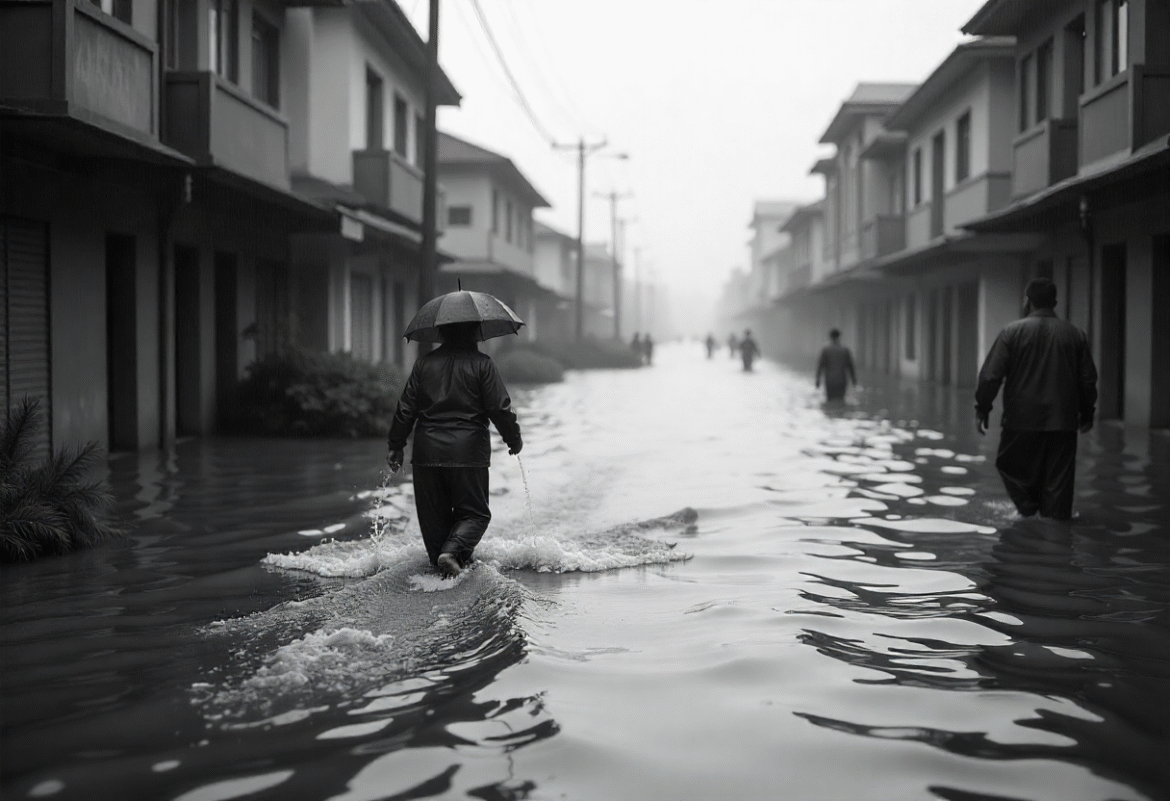Introduction: A Climate Driven Catastrophe
In the summer of 2025, Pakistan faced devastating floods triggered by unusually heavy monsoon rains between June 24 and July 23. According to a new study by the World Weather Attribution (WWA) group, this rainfall was 10 to 15% heavier due to human induced climate change transforming already dangerous weather into an even deadlier disaster(AP News, Deutsche Welle).
Key Findings from the WWA Study
- The study revealed that monsoon rains were significantly intensified by global warming, leading to widespread destruction: at least 300 deaths and 1,600 damaged homes, particularly in fragile, flood prone settlements(AP News, Deutsche Welle).
- Researchers found that a warmer atmosphere holds more moisture, amplifying precipitation intensity. Each 0.1 °C of warming results in heavier monsoon rainfall(AP News, Deutsche Welle).
- The analysis emphasized that, although Pakistan contributes less than 1% of global emissions, its vulnerability to such extreme weather makes it especially susceptible to climate driven disasters(Globedge).
Historical Context: 2022 vs. 2025 Escalating Extremes
- The 2022 floods one of the worst in Pakistan’s history resulted from a deadly combination of heavier than normal rains and melting glaciers. That event led to 1,700+ deaths and around $40 billion in damage(Wikipedia).
- For 2022, scientists estimated that climate change increased the intensity of short, 5 day downpours in Sindh and Balochistan by up to 50%, with longer 60 day rainfall rising by roughly 50% as well(worldweatherattribution.org, Scientific American).
Underlying Factors Exacerbating the Floods
- Built Environment & Urban Vulnerability
Rapid urban growth and settlements on floodplains mean that when floods strike, fragile housing collapses, amplifying casualties and damage(AP News, Deutsche Welle). - Infrastructural and Policy Weaknesses
Experts highlighted longstanding neglect: outdated water management, inadequate infrastructure, and poor planning have deepened Pakistan’s susceptibility to disaster(worldweatherattribution.org, AP News). - Intersecting Climate Drivers
Events like La Niña, exceptionally high temperatures some made 30 times likelier due to climate change and changes in jet streams and rainfall patterns all compounded the risk, especially for southern provinces(AP News, Deutsche Welle).

Why This Matters
- Attribution Science in Action
The WWA’s study shows how modern climate science can distinguish between natural variability and human induced impacts demonstrating that recent floods are not unprecedented outliers, but part of a trend fueled by warming. - Continuing Threat in a Warmer World
IPCC projections and historical data suggest these extreme rainfall events will only grow in intensity and frequency, leaving vulnerable communities increasingly exposed. - Urgent Adaptation Needs
Developing nations like Pakistan face disproportionate losses. Despite bearing little responsibility for climate change, they suffer massive consequences highlighting the critical need for adaptation funding and climate justice(AP News, Arab News).
Conclusion
The WWA’s findings offer a stark message: Pakistan’s recent floods were not just natural disasters they were amplified by climate change, which intensified rainfall by 10 to 15% in 2025. While this percentage may seem modest, in flood-prone, infrastructurally weak regions, even small increases can spell catastrophe.
As global warming continues, such events are expected to worsen. Pakistan’s experience underscores the critical urgency of building resilient infrastructure, investing in early warning systems, and supporting global adaptation efforts to safeguard vulnerable communities.

